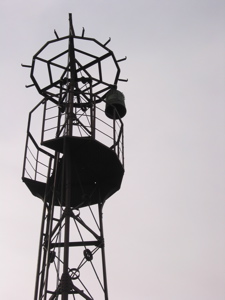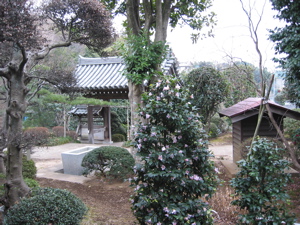
February 21st 2006
Work has been going rather better since my last diary entry. It's still a bit dubious whether I'll hit the writing deadline, but it's certainly possible, and words have been flowing at a suitable rate over the last week, at least. I did hardly any writing at the weekend, and actually played Civilization III yesterday, but it was clearly the right thing to do; yesterday I spent around an hour staring at the computer and wrote nothing (before giving up and playing Civ), while today I wrote 3750 words in under two and a half hours. That's all I need to write today and more, so taking a break to refuel was clearly the right thing to do.
This is one of the things that is difficult about freelance work, particularly work, like writing books, in which deadline only come every three months or so. On the one hand, it is important to take breaks and not get over-tired; the quality and quantity of work both suffer, and things go so much better after you take the break. On the other hand, take too many breaks and you miss the deadlines, never finish projects, and generally lose the ability to find work. I think it just takes time to get used to it, and get a feel for your own working patterns, so that you know when you need to take a break, and when, if you just stare at that flipping screen for another half hour, the words will start to flow. I'm finally getting the hang of it, I think, but it's taken several years of freelancing to really get a good sense for it. This is the main reason why, as an editor, I'm willing to work with my writers when deadlines slip a bit. The limit on that, of course, is the slippage space in the schedule.
Talking of editing, that seems to be going well right now. I did do some editing work yesterday, as there was a lot of relatively easy email-answering to be done, and all the projects seem to be flowing just fine at the moment. Long may it continue!
Teaching has also picked up suddenly; I have two new students, both male. One emailed me at 3:30, and had his first lesson at 6:30. That's the shortest lead time I've had yet. Anyway, if these two continue and take lessons every week, which is their current plan, I think I'll be averaging my target hours per week. (I have a number of slightly irregular students, which makes it harder to be sure.) I think I want at least one more weekly student, to give me a bit of a buffer against people cancelling or finishing, but I'm very nearly there. That means it's taken about ten months to get ten hours per week of independent teaching, purely through advertising on FindATeacher.net. Given that I moved a significant distance part way through, and stopped advertising for a couple of months around the move, that's not too bad. At the very least, it suggests that I will be able to sustain the teaching at this level, which is what I need.
Of course, I didn't teach on Sunday or Monday. On Monday I was far too busy trying to build a peaceful and elegant civilisation to conquer the world. (I stopped when another civilisation decided to actually attack me. How uncouth.) On Sunday, Yuriko was, of course, off work as well, so we went for a walk.
 The top of the old fire watchtower. You can see the bell that was rung if a fire broke out. The tower is right next to a large, traditional-looking house owned by the Yamada family. Coincidence?
The top of the old fire watchtower. You can see the bell that was rung if a fire broke out. The tower is right next to a large, traditional-looking house owned by the Yamada family. Coincidence?
Soon after we moved here, I picked up a booklet from the local council officers. It's a guide to living in Miyamae ward, and includes details of all the parks, shrines, temples, and festivals. It also has a number of walking routes, which take you past or through quite a few of the parks, shrines, and temples. On Sunday, we went out to follow the first one. It was nominally 6.4 kilometres, but we got a bit lost at one point, and spent quite a long time looking round the temples and shrines on the way, so it took us about four hours.
It was fascinating. Given how close we are to Tokyo, there are some remarkably rural areas within easy walking distance. I suspect that this is a feature of being to the north of Kawasaki; Tama ward, to the north of us, seems even more rural. Here, it takes the form of a lot of allotments, and a number of very large parks. There were some places where it was hard to believe that we were still within the world's largest conurbation.
 A view of the gate to Shugetsuin ("Autumn Moon Temple") from inside. This was very near the end of our walk.
A view of the gate to Shugetsuin ("Autumn Moon Temple") from inside. This was very near the end of our walk.
The guidebook also explained a number of the places we saw on the way, such as the old fire lookout tower, the spot where New Year's ornaments are traditionally burned, and something of the history of the shrines and temples. Most of them go back centuries, and the land around them has changed a great deal. Most Buddhist temples have graveyards attached, and they are interesting to look around. One reason for that, as I may have mentioned before, is that Japanese graves are typically for a family, rather than an individual. Thus, you can look around and get a sense for the families that live in an area. Around here, the Yamadas, Yazawas, and Koizumis are clearly the most important. We live in the Yamada area; they have the biggest graves, and the lists of names of contributors to the rebuilding of shrines and temples are utterly dominated by Yamadas. A bit to the west, you move into the Yazawa area. The Koizumis are the hereditary priests of Shirahata Hachiman Daijin, the local shrine, and so seem to be secondary but found throughout the area. Right in the west, we seemed to get into the range of a fourth family, the Katayamas, but we didn't see so much evidence of them.
At one point, we came across the end of an event for primary school children in one of the nature areas. Apparently they do it every year, and the children get to eat pizza cooked outside and climb a particular tree. They had a full rope and harness set-up to make sure that the children couldn't fall, and I suspect that part of the reason for using that tree is that it has a convenient strong branch for supporting the rope at the top. We chatted a bit to the head of the Nature Preservation Group (well, Yuriko chatted and I made occasional comments), and found out a few more details about some of the places. Apparently, the little river near where they were having the event is very good for fireflies in June. We'll have to go; I've never seen fireflies for real. Looking on the announcement board as we left, we discovered that the head of the group was a Mr Yazawa. Ah-ha... I have to say that this does look like a good area for raising children; there's plenty of nature for them to play in, and plenty of civilisation as well. Yuriko says that she notices the difference on the trains. Where she used to live, there were a lot of foreigners and single people, but on this line there are far more Japanese families.
There are a lot more walks in the booklet, around other bits of the ward, so we're planning to do those over the next few months. It does seem like a good idea to get to know the area where we're living now, especially since we aren't planning to move for a while.